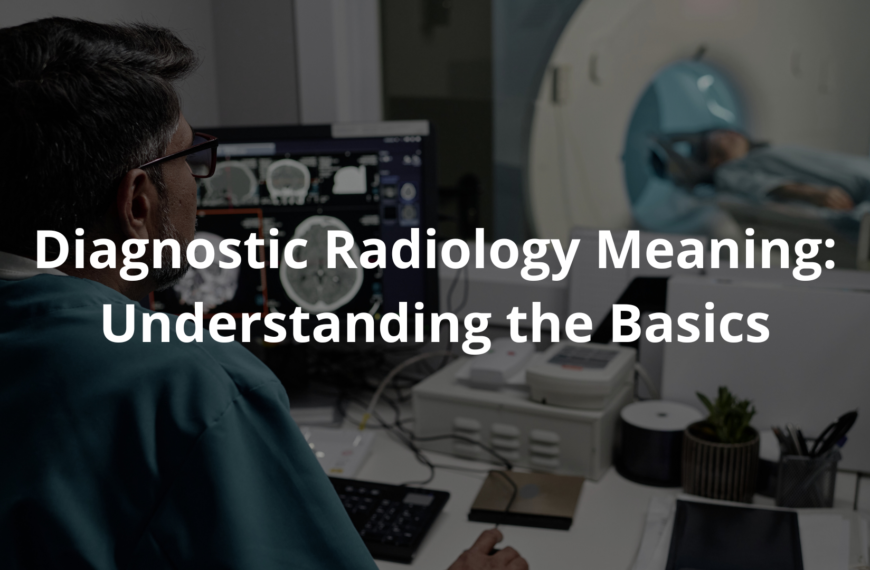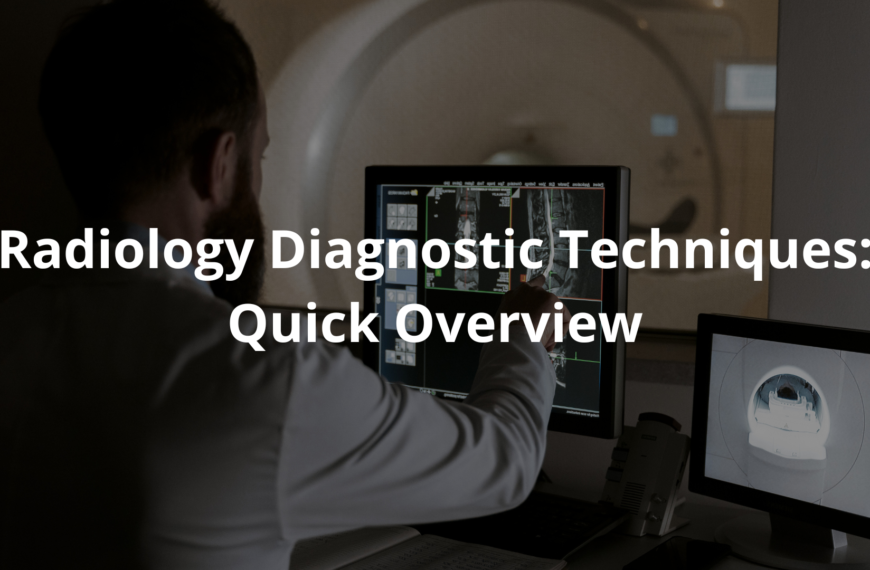Unlock the magic of MRI diagnostics: See how this game-changing tool helps doctors provide better care by seeing inside your body.
There’s something almost wondrous about how modern medicine reveals the mysteries of the human body. Think of MRI diagnostics, for example. With a gentle hum, this machine takes a peek inside without making a single cut, like opening a door to a hidden realm.
Magnetic Resonance Imaging, or MRI, harnesses powerful magnets and radio waves to create vivid images of organs and tissues, helping doctors solve health puzzles. It’s a remarkable tool, indeed. If you might need one of these scans someday, don’t worry—understanding the process can ease your mind. So, keep reading to learn more about this fascinating technology!
Key Takeaways
- MRI uses magnets and radio waves to create pictures of the inside of our bodies.
- It’s safe and does not use harmful radiation like X-rays or CT scans.
- Understanding what happens during an MRI can help you feel less nervous if you need one.
What is MRI and How Does It Work?
MRI means Magnetic Resonance Imaging. It’s a cool test that helps doctors look inside our bodies. But how does it work? Well, the MRI machine uses a large magnet along with radio waves to take pictures. When a person lies inside this big machine, the magnet tells tiny particles in their body to line up. Then, the radio waves help create colourful images that show soft tissues like the brain and muscles.
It’s pretty amazing! For example, if a doctor thinks there’s a problem in someone’s brain or spine, they might ask for a brain MRI. These images help doctors understand what’s happening. The whole process is safe and doesn’t require any surgery, which is especially nice for kids who might be a bit scared of going to the doctor.
Furthermore, doctors use MRI to see details that other scans, like CT or X-ray, might overlook. That’s because MRI is really skilled at revealing the insides of organs, muscles, and even blood vessels. In fact, it’s often the best option for checking issues such as tumors, injuries, or infections. The technology behind MRI is fascinating and vital for medicine today.
What is an MRI Exam Like?
For someone who’s never experienced an MRI exam, it might sound a bit mysterious. First, they meet the MRI technician, who explains everything. Patients wear a hospital gown (just like in the shows!) and lie down on a table that gently slides into the MRI machine. Sure, it can be quite noisy, almost like a washing machine, but earplugs help.
The MRI machine captures pictures for about 20 to 60 minutes. While that sounds long, lying still can feel like a nice break from a hectic day! It’s important to stay still, otherwise, the pictures could end up blurry. Sometimes, the doctor uses a special dye called a contrast agent to make the images even clearer. It’s just a tiny shot before the MRI starts, and it helps highlight specific parts of the body, improving the accuracy of the diagnosis.
There’s usually a big screen where the technician can see the images as they come in. They’re trained to spot any problems right away. If they see something suspicious, like a strange shadow on the image, they can tell the doctor immediately. This means that MRI exams don’t just take pictures; they work hard to ensure patients receive the best care possible.
Different Types of MRI Scans
There are various MRI scans for different body parts. For instance:
- Brain MRI: This helps look for problems in the brain, like tumours or swelling. It’s super important for diagnosing brain injuries.
- Spinal Cord MRI: It examines the spine, assisting in identifying issues with the spinal cord or discs. This can help diagnose conditions like herniated discs or spinal injuries.
- Breast MRI: This checks for breast cancer or other conditions, often used for women who have a higher risk of breast cancer.
- Foetal MRI: Used during pregnancy to examine the baby’s brain or spine, ensuring everything is developing normally.
This variety reflects just how useful MRI scans can be in diagnosing many conditions. Each type focuses on specific areas, enabling doctors to find issues invisible to other imaging methods.
Why Choose MRI Over Other Tests?
You might wonder why doctors prefer MRI over other tests like CT scans or X-rays. One big reason is safety! MRI doesn’t use harmful radiation, making it a safer option for patients, especially kids. Also, MRI shows soft tissues and organs clearly, critical for spotting problems like tumours or injuries.
Doctors rely on MRI because it provides detailed images guiding their decisions. These images help them see if something unusual is happening inside the body—something that might not pop up on other tests. This means that MRI can truly be a lifesaver for many patients.
Another reason to pick MRI is its ability to show real-time images, letting doctors monitor blood flow and essential functions. This is especially handy in cardiac MRI, where doctors can see how well the heart works.
Preparing for Your MRI
Before anyone goes for an MRI, there are some things to remember. Patients may be asked to avoid eating or drinking for a few hours beforehand, especially if they’re getting the contrast dye. It’s also very important to let the doctor know of any metal objects in the body, like pacemakers or clips, since the MRI machine is super strong and doesn’t get along with metal.
If someone has hearing aids, it’s best to take them out before the scan because the machine can be rather loud. And don’t stress—the machine isn’t scary. It’s just a small tube, and patients will be safe inside!
Most people feel comfortable in the machine, especially when they know what to expect. The technician stays close by and is ready to help if needed.
Safety of MRI Scans
Safety is always the top priority with medical tests. MRI scans are generally very safe, but it’s essential to chat with a doctor about any worries before getting one. They’ll check for any medical devices in the body that could be affected by the magnetic force.
Some folks might feel a little anxious in the machine since it can be a tight fit. Patients can ask for a friend or family member to stay nearby to help ease their minds. Being relaxed makes it easier to take clear pictures.
Moreover, the staff at MRI facilities are trained to handle safety concerns. They follow strict protocols to ensure every patient is safe and comfortable throughout the entire process. [1]
Side Effects and What to Expect

Most people don’t experience side effects after an MRI. Some might feel a bit warm from the contrast dye, but that usually passes quickly. If someone feels nervous about tight spaces, they can ask about an open MRI machine—it’s less confining and more open.
You might notice some noise from the machine, but earplugs or headphones can help. Just remember, all this is part of getting sharp images so doctors can provide excellent care!
After the MRI, patients can usually go back to their regular activities right away. It’s always a good idea to check with the doctor for any specific instructions, especially if contrast dye was used.
The Future of MRI Diagnostics
MRI technology keeps getting better, making scans faster and more comfortable. Researchers work hard to find ways to improve MRI imaging and make it more available. In the future, we might see machines that can take clearer pictures in less time. [2]
Also, as more people learn about MRI and its advantages, more facilities will open, especially in places where it’s harder to find. This means more patients can receive the care they need without travelling far.
Exciting research is also happening with advanced MRI techniques, which could change how doctors diagnose diseases. For example, functional MRI (fMRI) can show brain activity by measuring blood flow. This might help doctors understand how the brain works during different tasks.
So, when patients need an MRI, they can feel confident knowing it’s a crucial tool that helps doctors diagnose health issues and keep them healthy!
FAQ
What happens during an MRI procedure and how does MRI works to create images of my body?
An MRI uses strong magnetic fields to create detailed pictures of your body. When you lie in the MRI scanner, magnetic fields and radio waves make water molecules in your body line up. As protons realign, the scanner picks up these signals to make quality images of your organs and soft tissue. Unlike x-rays and ct scans, MRI uses no radiation, making it very safe.
How do different types of imaging tests compare, like ct scan versus traditional MRI?
CT scans use rays and ct technology to take quick snapshots of your body, while MRI scanning takes longer but gives clearer high resolution images. MRI is especially good at showing soft tissue and white matter in your brain. While both help diagnose conditions, MRI provides better image quality for detailed looks at body areas like your spinal cord.
What specialized MRI services are available for different body areas?
There are many types of specialized scans including breast MRI for early detection of breast cancer, prostate MRI to check for prostate cancer, body MRI for organs, paediatric MRI for kids, and foetal MRI for checking unborn babies. Doctors also use MRI enterography to look at your small bowel. Each type of imaging is designed for exact location scanning of specific parts.
What should I know about MRI contrast agents and test details before my scan?
Some scans need contrast agents to get better quality images. If your doctor orders this, they’ll tell you to avoid eating a few hours prior. Let them know if you have any metal implants as these can affect the strong magnetic field. The imaging reports usually come back quickly to help diagnose your condition.
How do MRI machines ensure patient comfort and quality care during imaging MRI?
Modern MRI scanners are designed with patient comfort in mind. The medical imaging team will explain everything and can give you headphones during the scan since MRI machines can be noisy. They focus on your comfort while still getting clear images needed for proper diagnosis. Many hospitals now have imaging centers with newer MRI machines that work faster while maintaining high image quality.
Conclusion
MRI diagnostics are super important for doctors to understand what’s happening inside our bodies. It’s a safe test that uses magnets and radio waves to create clear pictures. If you ever need an MRI scan, knowing what to expect can make things much easier. It’s all about feeling safe and comfy. Don’t hesitate to chat with your doctor if you’ve got any questions or worries. MRI is here to help keep everyone healthy and well!
References
- https://www.ranzcr.com/college/document-library/revised-college-guidelines-for-gadolinium-containing-mri-contrast-agents
- https://www.aihw.gov.au/reports/diagnostic-services/magnetic-resonance-imaging-services/contents/executive-summary




